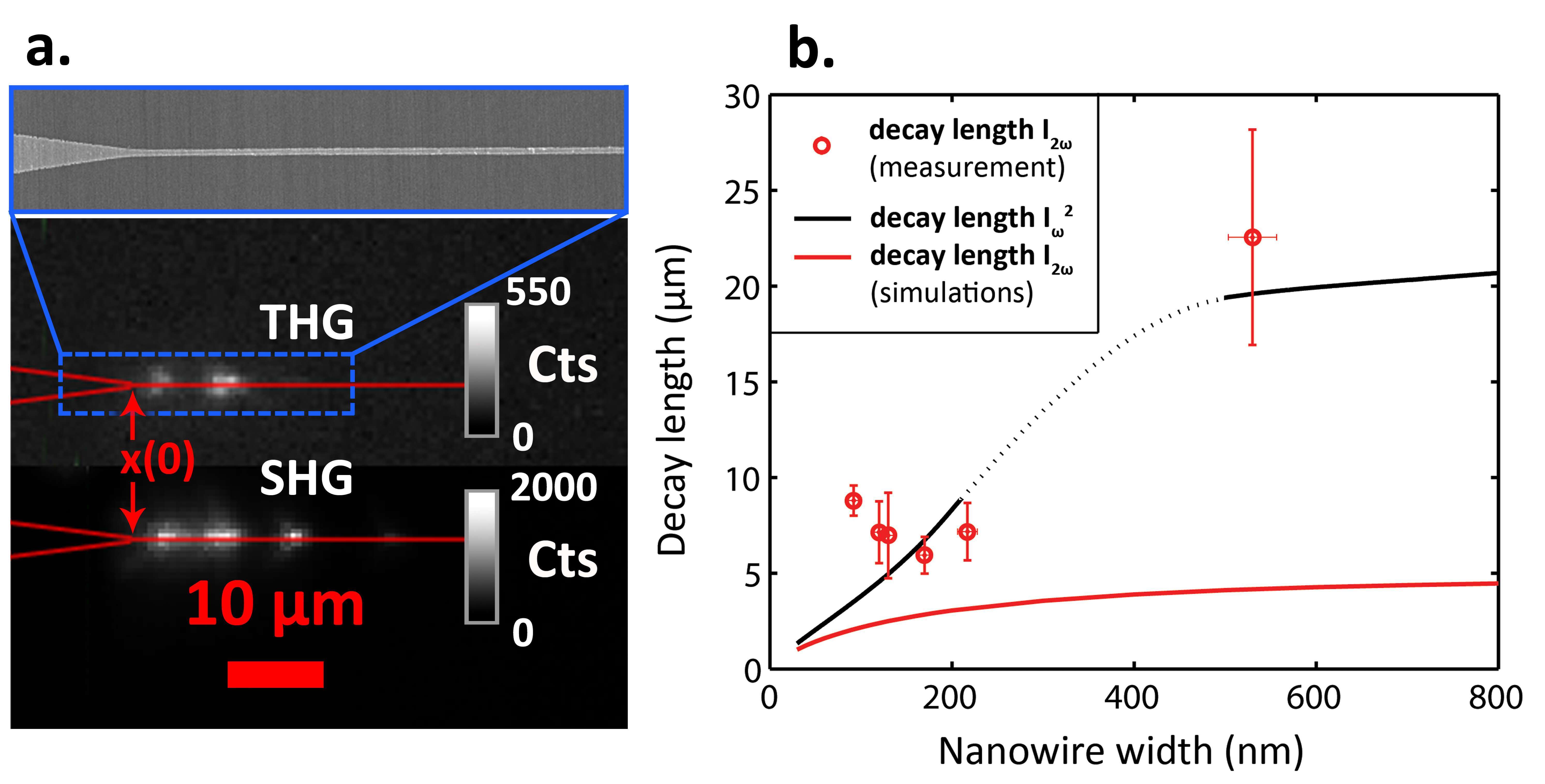
Harmonics Generation by Guided Surface Plasmon Polaritons on Single Plasmonic Nanowires
Nonlinear plasmonics has recently generated enormous interest as a route towards fully integrated nanophotonic devices, which require active manipulation and control of plasmonic signals. Recent advances in this area exploit the plasmonic field confinement and enhancement to increase the efficiency of nonlinear processes such as harmonic generation and the Kerr effect. Of particular importance are nonlinear processes in guided plasmonic modes, as these could ultimately pave the way towards realization of nanoscale integrated optical circuits. Here, we present far-field observations of harmonics generation by guided surface plasmon polaritons (SPPs) on single Au nanowires.
We experimentally observe both second-harmonic generation (SHG) and third-harmonic generation (THG) in the visible, generated by a guided SPP mode at a free-space wavelength of 1550 nm. Fig. 1.a. shows an example of SHG and THG signal scattering from a nanowire, spectrally filtered and collected by a CCD camera. To confirm the nature of these signals we study their power dependence, where we observe that the yield of the nth harmonic is indeed proportional to the nth power of the incident light intensity. We study the propagation length of the SHG signal for multiple nanowires with a varying width using far-field microscopy in conjunction with finite-element method calculations. Our findings reveal that the decay lengths of the SHG signal from our measurements (red circles) follow the decay lengths for the intensity of the fundamental squared (black solid line) as calculated from simulations (Fig. 1.b.). The measured decay lengths are much longer than the theoretically predicted decay length of propagating SPPs on the SHG wavelength (red solid line). These two observations confirm that the second harmonics are actually generated from the propagating fundamental SPPs.

Fig. 1: a. Top view of the 775 nm (SH) and 517 nm (TH) signal in counts per 5 minutes on a nanowire (height 50 nm, width 230 nm) on the CCD camera with a red overlay showing the taper and wire to guide the eye. The blue rectangle shows a scanning micrograph of a typical nanowire b. The decay lengths of second harmonics and the fundamental from derived from CCD images (example shown under a.) and simulations.
[1] M. Kauranen and A.V. Zayats. Nature Photonics 6, 737 (2012).
hoogh@amolf.nl
Powered by Eventact EMS